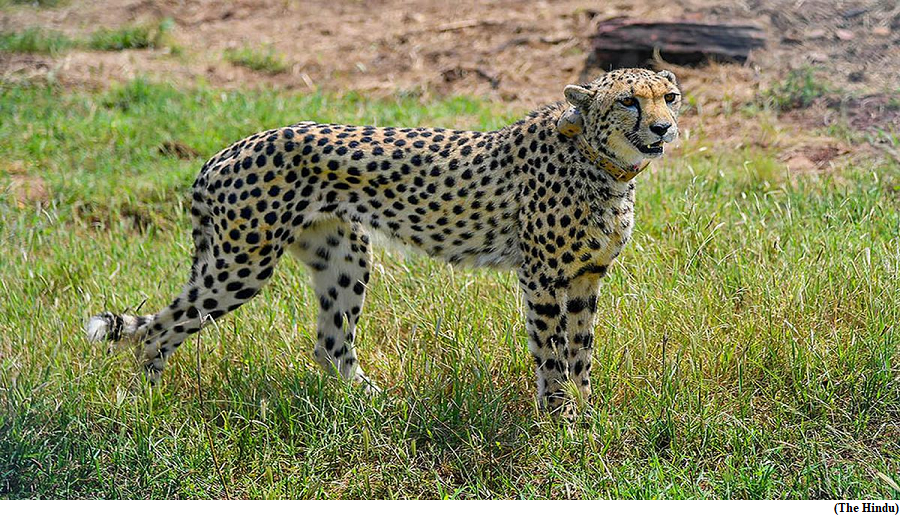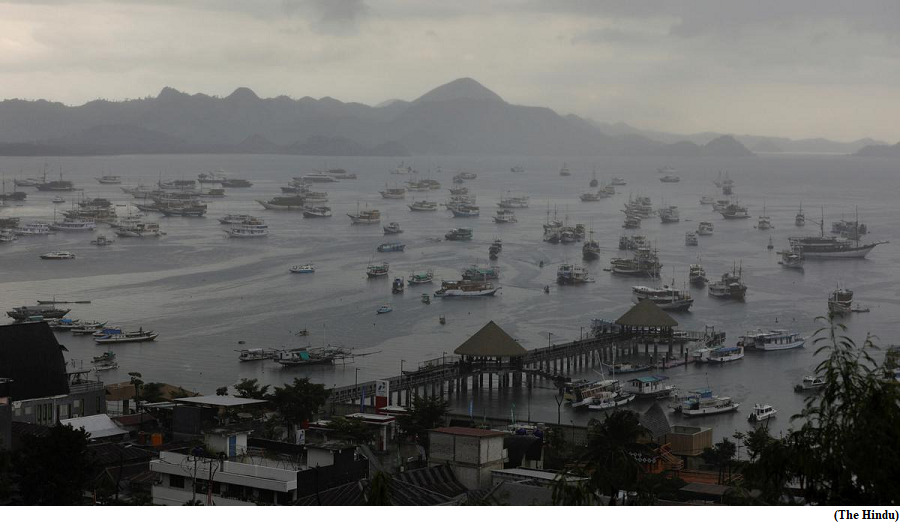Five more cheetahs to be released into wild at Kuno (GS Paper 3, Environment)

Why in news?
- Five more cheetahs; three females and two males will be released from the acclimatisation camps to “free-roaming conditions at the Kuno National Park (KNP) in Madhya Pradesh before the onset of monsoon in June.
Project Cheetah:
- The statement was based on a report submitted by an expert committee to the National Tiger Conservation Authority (NTCA), which is the nodal body for Project Cheetah.
- The committee members visited the KNP on April 30 and reviewed the current status of Project Cheetah.
- Twenty cheetahs have been brought from Namibia and South Africa since September 2022 as part of a translocation programme to reintroduce the wild cat into Indian habitat.
- As part of their acclimatisation, the animals were housed in special enclosures. However, two of them died, one of kidney infection and the other of heart failure, following a strenuous hunt.
Long-term plan:
- The long-term plan to acclimatise the animals to Indian conditions is to gradually release them into the wild and keep adding more animals from Africa until a sizeable self-sustaining population is established in a decade or so, while accounting for natural mortality and acclimatisation-related challenges.
- So far, four of the cheetahs have already been released into the wild.
- The remaining cheetahs, would remain in the acclimatisation camps for the duration of the monsoon season (June-September).
- After September, when the monsoon ends, more animals would be released into the KNP or surrounding areas in “a planned manner” to the Gandhi Sagar Sanctuary in Madhya Pradesh.
- The cheetahs would be allowed to move out of the KNP and not necessarily recaptured unless they venture into areas where they are in “significant danger”.
Concerns:
- Independent experts have raised concerns that the cheetahs had on average too little space and limited access to prey at the national park, and this would pose considerable problems for their eventual flourishing in India.
- As per the scientists, available space at the KNP, about 1,00,000 sq. km. in the park and 6,00,000 in the landscape surrounding the park, was adequate for 21 cheetahs. At present, there are 18.
Chinese boats cross Indian and ASEAN ships during military exercise
(GS Paper 2, International Relation)
Why in news?
- Chinese boats and maritime militia reportedly tracked the drills carried out by the navies of India and ASEAN countries in the South China Sea.
- China appeared to be using the militia to intimidate. They apparently wanted to disrupt the naval exercise.

Details:
- The naval ships and aircraft from India, Vietnam, Thailand, the Philippines, Indonesia and Brunei took part in the two-day sea phase of the ASEAN-India Maritime Exercise (AIME 2023).
- The Chinese militia was in the Vietnamese Exclusive Economic Zone and the naval vessels even crossed each other, but they didn't engage.
- Such militias consist of commercial fishing boats, which work in coordination with the Chinese authorities for political objectives in the South China Sea.
ASEAN-India Maritime Exercise:
- AIME 2023 involved a total of nine ships and six aircraft, In addition to that, more than 1,800 personnel took part from across the bloc's member states.
- The Harbor Phase of AIME-2023 held at Changi Naval Base from May 2nd to May 4th, 2023, and the Sea Phase held in the South China Sea from May 7th to May 8th, 2023.
- The primary goal of AIME-2023 was to provide an opportunity for the Indian Navy and ASEAN navies to work together closely and conduct seamless operations in the maritime domain.
- INS Delhi and INS Satpura successfully participated in various activities during the harbour phase of the AIME 2023.
GSI finds massive lithium reserves in Rajasthan to meet 80% of India's demand
(GS Paper 3, Economy)
Why in news?
- The Geological Survey of India (GSI) have identified substantial reserves of lithium in the Degana municipality of Nagaur district in Rajasthan.
- These reserves are said to contain significantly more lithium than the 5.9 million tonnes found in Jammu and Kashmir recently.

Why it matters?
- The quantity of lithium found in Rajasthan can meet about 80 percent of the country’s demand and requirement.
- Lithium is the lightest as well as the softest metal across the globe. A nonferrous metal, it converts chemical energy into electrical energy and is one of the key components in EV batteries.
- As of now, India depends on imports for many minerals like lithium, such as nickel and cobalt, and has been looking to strengthen its supply of these key minerals, which are otherwise crucial for furthering its plans to expand its electrical vehicle footprint.
Global production:
- At the moment, 47 percent of the world’s lithium production takes place in Australia, 30 percent in Chile and 15 percent in China.
- But, 58 percent of the mineral’s processing takes place in China, 29 in Chile and 10 percent in Argentina.
Significance for India's EV industry:
- As India discovers significant lithium reserves in Rajasthan, in addition to the previously discovered reserves in Jammu and Kashmir, the country is well positioned to become the 3rd largest market for EVs in the next 4 years.
- Batteries, being the single largest cost and supplies dominated by China, have been a major obstacle for India's EV industry.
- However, with the 'Make in India' initiative and the discovery of lithium reserves, India is now able to reduce its dependence on foreign countries and control the fluctuating price of lithium.
- This development not only enables India to meet its domestic requirements but also allows it to supply lithium to other countries, creating a promising future for the country's EV industry.




